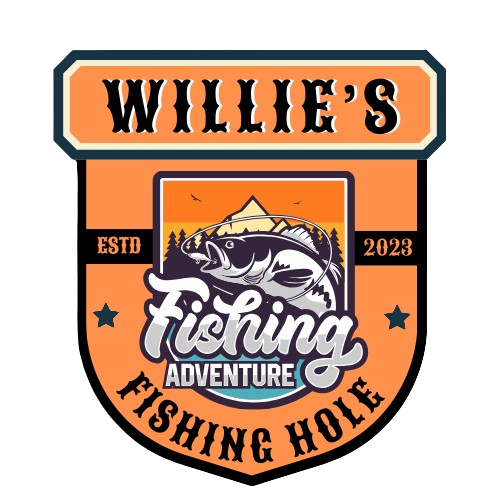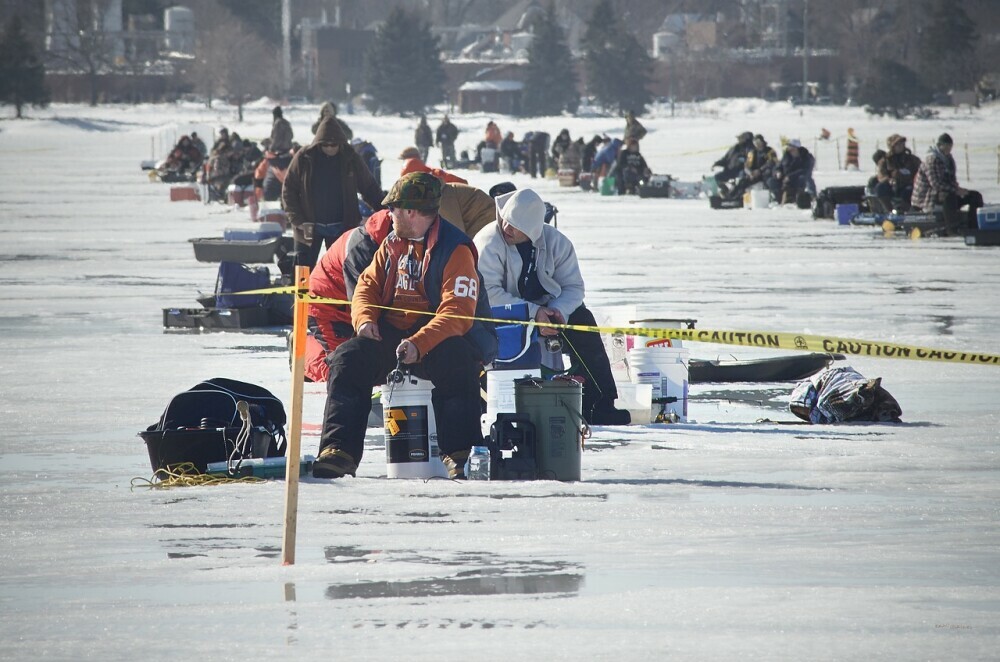So you want to go ice fishing. Welcome to “Chills Thrills: Ice Fishing Safety First” the exhilarating world of winter fishing, where frozen lakes transform into a playground for anglers seeking the thrill of ice fishing. as with any aspect of fishing, there are certain guidelines and safety tips that you should follow. Although we can’t enforce these upon you, we certainly would not be doing our job as a Fishing Resource if we didn’t stress the importance of safety first when it comes to ice fishing.
Understanding Ice Conditions
Before venturing onto the ice, understanding the ice conditions is paramount. Different conditions allow for different adventures. There are some common rules of thumb when it comes to ice thickness and safety:
- Before walking on the ice be certain it is a minimum of 4 inches thick. To check this, drill a few test holes with an ice auger and use a measuring tape to validate the thickness. Never guess at the thickness of the ice. That is just asking for disaster!
- 5 to 7 inches thick and a small group of you can safely venture out on the ice, by foot, for your day of fun.
- 8 to 12 inches and the ice is considered safe for ATVs and snowmobiles. Just because you see other ATVs or snowmobiles on the ice, does not mean it is safe. Always check the thickness for yourself.
- 12 to 15 inches and you can take a small car onto the ice. Again check the thickness yourself. Not everyone driving their car onto the ice is responsible.
- Regardless of walking out to your spot or using a vehicle of some sort, always pay attention to changing ice conditions. Just because it was 4 inches at the shore area, does not mean there won’t be pockets of thin ice.
- Watch for areas in the ice where the water is on top of the surrounding ice or open areas of water where there is no ice. These are immediate red flags that the ice ahead is not safe.
Equipping Yourself for Safety
Proper safety gear is not an option, it is required. Equip yourself with:
- Ice picks become your lifeline if you fall through the ice. They can help you, especially in the case of smooth ice, establish a solid hold into the ice to help pull you out.
- Have a rope available in the case of ice failure so others attempting to help you can stay a safe distance back and still assist in pulling you to safety.
- A life jacket gives you the floatation you may need in the case of an ice break. Most ice fishing clothing manufactures now have floatation built into their suits.
- Warm clothing is a must to combat the cold winds and other weather conditions. If you are not warm you will not enjoy your outing at all.
- To check ice thickness, use a cordless drill with an auger attachment for speed and efficiency.
- While walking out to your spot, using an Ice Spud can assist in identifying thin ice conditions ahead of you.
- Carry a mobile phone or radio for communication. Make sure these are always fully charged before heading out. Carry spare batteries for your radio in case the ones in it die or fail. Know the emergency radio channels to broadcast on.
- If you can’t make the phone call or radio broadcast, you might be able to use a whistle. Always have one that is attached to a lanyard and attached your your clothing for quick and easy access. Anglers know that the sound of a whistle is usually a call for help.
- Establish an emergency action plan with your companions, ensuring everyone knows the procedure in case of unexpected events.
Best Practices on the Ice
- When cutting fishing holes, use a specialized ice auger for efficient and safe drilling. Clear the way to the ice if there is fresh snow or slush buildup. This way you are checking the actual ice and not the snow and slush as part of the thickness.
- Always check the stability of the ice around the hole using an ice chisel or spud bar. Again, move snow away so you are at the actual ice for this.
- Practice cautious movement, especially in areas with varying conditions.
- Adopt a buddy system. It is never a good idea to go out on the ice alone, especially if there are not many other anglers present.
- Invest in a portable ice hut at the very least. This gives protection against wind and extreme cold.
- Never let the warmth of the sunshine fool you. Keep as much of your face and head covered at all times if you are in the elements to prevent wind burn and frostbite.
- Use a propane ice heater to maintain a comfortable temperature within the shelter.
- Hand and foot warmers are essential for maintaining body heat in frigid temperatures.
These accessories not only ensure comfort but also contribute to clear decision-making on the ice.
Regulations and Compliance
Check and comply with local fishing regulations. Be aware of any specific rules for ice fishing in your chosen location. Understanding and following these regulations contribute to a harmonious fishing environment.
Practice responsible fishing by cleaning up after yourself and minimizing environmental impact. Use a portable trash bag to collect and dispose of waste properly. Never leave hooks and stray line lying in the snow or on the ice where you were. “Leave no trace” to ensure that the beauty of nature remains for future anglers. Leave your space cleaner than when you arrived.
Remember this quote as you finish up your ice fishing adventure, “Our joy in nature comes with a responsibility to preserve it for others. Respect the environment, and it will continue to be our playground.”
Conclusion
The theme of this post is all about respect. Respect the environment, the ice and your fellow anglers and they will respect you. Whether this is your first ice fishing adventure or just one of many, “Chill Thrills: Ice Fishing Safety First” is your go to guide for staying safe on the ice.
Ice Fishing requires you to be fully aware of your surroundings, not just above the surface, but below. Stay safe, have fun and respect the ice! We want you to send us some of your ice fishing stories.

